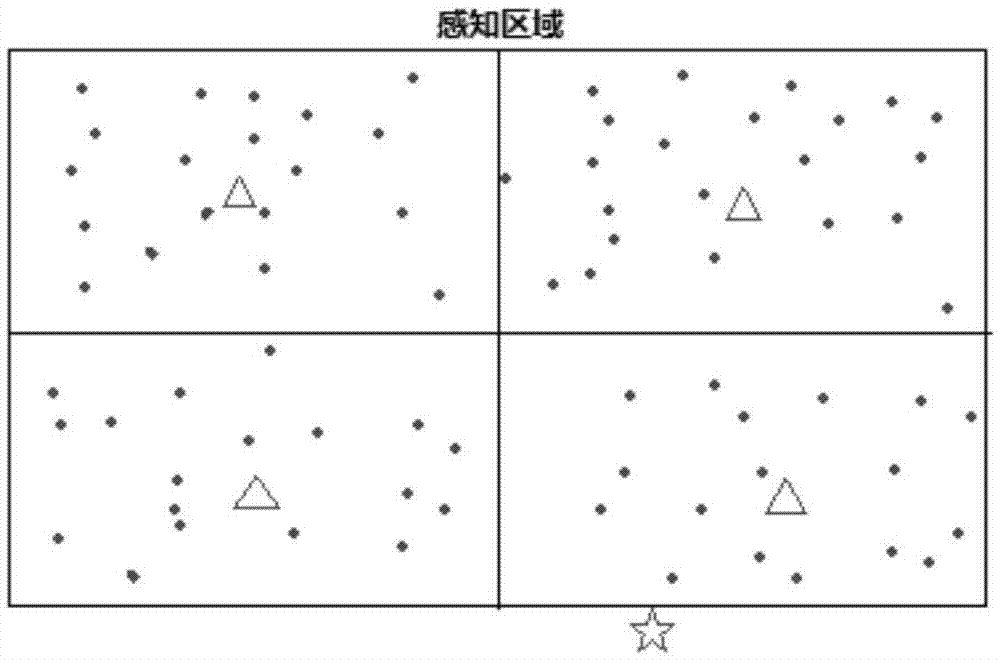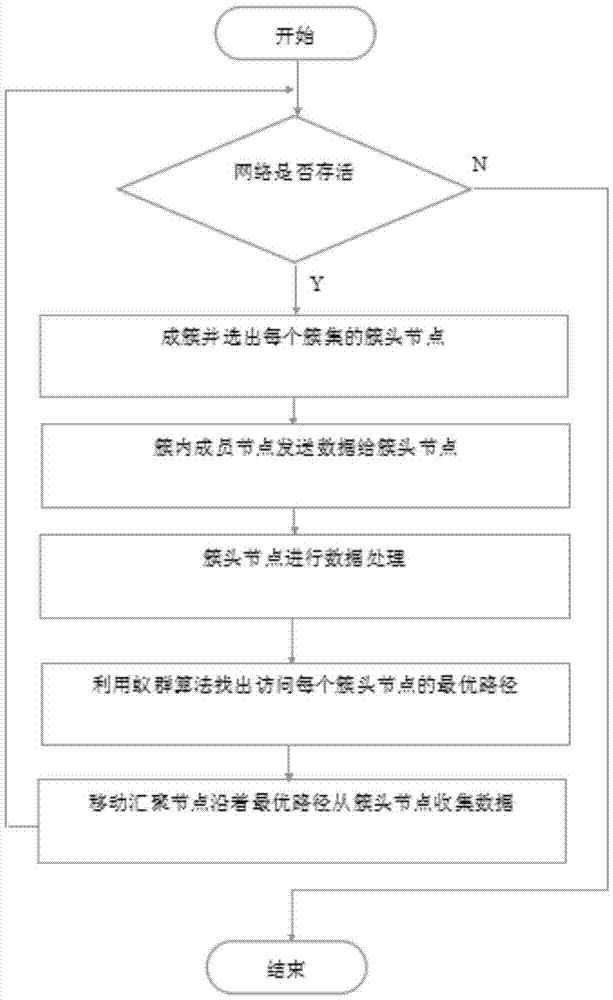Wireless sensor network routing protocol based on mobile sink node and ant colony optimization
A wireless sensor and convergence node technology, applied in wireless communication, network topology, advanced technology, etc., can solve problems such as energy holes, uneven distribution of cluster heads, prolong the life cycle of wireless sensor networks, etc., to alleviate network delay, avoid Long-distance transmission, avoiding the effect of energy hole phenomenon
- Summary
- Abstract
- Description
- Claims
- Application Information
AI Technical Summary
Problems solved by technology
Method used
Image
Examples
Embodiment Construction
[0014] It is easy to understand that, according to the technical solution of the present invention, those skilled in the art can imagine various implementations of the present invention for transmitting information in a wireless sensor network without changing the essence of the present invention. Therefore, the following specific embodiments and drawings are only exemplary descriptions of the technical solution of the present invention, and should not be regarded as the entirety of the present invention or as a limitation or limitation on the technical solution of the present invention.
[0015] combine figure 1 , the wireless sensor network includes wireless sensors represented by dots, triangles represent cluster heads, and a mobile sink represented by a five-pointed star is placed on the edge of the sensing area.
[0016] For the scheme of static sink nodes, the energy consumption of sensors close to the sink node will be much greater than that of sensors far away from the...
PUM
 Login to View More
Login to View More Abstract
Description
Claims
Application Information
 Login to View More
Login to View More - R&D
- Intellectual Property
- Life Sciences
- Materials
- Tech Scout
- Unparalleled Data Quality
- Higher Quality Content
- 60% Fewer Hallucinations
Browse by: Latest US Patents, China's latest patents, Technical Efficacy Thesaurus, Application Domain, Technology Topic, Popular Technical Reports.
© 2025 PatSnap. All rights reserved.Legal|Privacy policy|Modern Slavery Act Transparency Statement|Sitemap|About US| Contact US: help@patsnap.com



